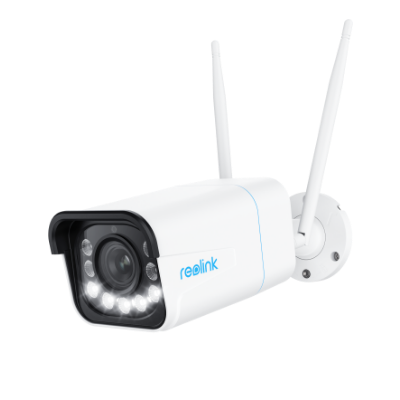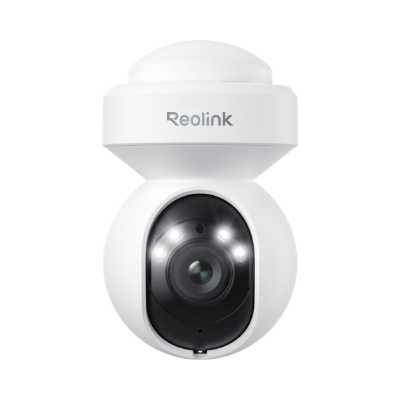WPA2 vs. WPA3: Understanding the Key Differences

Wi-Fi security is everyone's concern, but getting into technicalities isn't everyone's cup of tea. WPA2 and WPA3 are Wi-Fi security protocols, and users must know about them to keep their wireless network safe.
In this article, we will explain the key differences between WPA2 vs. WPA3 to help you select the right protocol according to your needs.
WPA2 vs. WPA3: Basic of Them
What is WPA2?
WPA2 stands for Wi-Fi Protected Access 2. It is a security protocol introduced in 2004 by Wi-Fi Alliance. It is a better security standard compared to WPA and WEP.
Most Wi-Fi devices use WPA2 as it is widely adopted. It offers Advanced Encryption Standard (AES) to protect your data and privacy. However, it is still vulnerable, and hackers can get access to the network and attack connected devices.
What is WPA3?
WPA3 is the latest security protocol introduced in 2018. It is better and more secure than WPA2. However, it is still not widely adopted due to incompatibility and lack of user awareness.
WPA3 uses stronger data encryption. It encrypts all individual devices' data, making it extremely difficult for hackers to intercept data.
WPA2 vs. WPA3: What's the Key Difference?
The key difference between WPA2 and WPA3 lies in their encryption strength and security protocols. While WPA2 relies on a shared encryption key for all devices and is susceptible to interception and attacks, WPA3 offers stronger encryption with longer keys and implements individualized data encryption. Let's see the details:
Encryption Strength
WPA3 offers a stronger encryption strength compared to WPA2.
The encryption key of WPA2 is 128 bits.
In contrast, WPA3 uses 128 bits, 192 bits, and 256 bits. A 192-bit key is for personal mode, and a 256-bit key is used for enterprise mode. It means it has longer encryption keys, which translates to better security. Longer encryption keys are more difficult to decrypt.
Both WPA3 and WPA2 use Advanced Encryption Standard (AES). However, WPA2 is vulnerable and can be intercepted. On the other hand, WPA3 implements AES through SEA protocol to provide better protection against attacks.
Secondly, WPA3 uses stronger cryptographic algorithms and a more secure key exchange method. Overall, it is a better choice when security is the utmost priority.
Individualized Data Encryption
WPA3 implements individualized data encryption. It means all devices connected to the network have a unique encryption key. That's why it becomes difficult for a hacker to intercept traffic.
All traffic is encrypted, which makes interception extremely difficult. And even if someone intercepts the traffic, decrypting each transmission would be another tough task. With that said, individualized data encryption is much better for the security of Wi-Fi networks.
WPA2 uses a shared encryption key for all devices. If the key is compromised, it poses a risk to the whole network.
Improved Authentication
WPA2 works on a Pre-shared Key (PSK). It means the users have a set password to use for authentication. It is easy to crack this password, and hackers can get network access.
WPA3 has improved authentication. It uses the Simultaneous Authentication of Equals (SAE) protocol. It is difficult to guess the password. Secondly, even if the password is intercepted, there is no way to decrypt data traffic.
Protection Against Attacks
WPA2 is better than WPA, but it is vulnerable to various attacks.
The password of WPA2 can be guessed. Even after various improvements, it can't overcome KRACK and Dictionary attacks.
WPA3 is more secure, and there is no way to guess its password. It offers a stronger brute force attack protection to prevent password guessing.
WPA2 vs. WPA3: Comparison in Different Versions
WPA2 Personal vs. WPA3 Personal
You can have personal security protocols on WPA2 and WPA3. These are suitable for home Wi-Fi networks. However, there are a few differences between them.
WPA2 Personal uses a 128-bit encryption key, and WPA3 uses a 192-bit encryption key. Therefore, WPA3 is more secure.
We have discussed that both protocols use Advanced Encryption Standard (AES). But WPA3 uses a stronger encryption algorithm, GCM, to prevent hacking and password guessing. On the other hand, WPA2 uses the CCMP algorithm, which does not provide maximum protection from various known attacks, such as KRACK and Brute Force.
Regarding authentication, WPA2 personally uses a pre-shared key (PSK), while WPA3 uses simultaneous authentication of equals (SAE). WPA3 provides secured authentication and prevents attacks on your personal Wi-Fi network.
If security is your main concern and you have WPA3-compatible devices, WPA3 would be the best option and long-term option. Although it is not widely used, it will be more common in the future.
WPA2 Enterprise vs. WPA3 Enterprise
WPA2 and WPA3 also operate on Enterprise modes. It is a suitable option for organizations and businesses. Let's understand the difference between the enterprise modes of WPA2 and WPA3.
Organizational data must be transmitted through a secure channel. If the data is extremely confidential, the best option is to use WPA3. It uses better encryption with a 256-bit encryption key and advanced encryption algorithms.
WPA3 protects users from Brute Force and KRACK attacks. It does not fall pretty for common password-guessing techniques. And even if the password is guessed, it is too complex to decrypt data. Thus, it is a more secure option for connecting many devices.
However, in enterprises, businesses, and organizations, the biggest issue is compatibility with WPA3. People won't have compatible devices. In that case, a better option would be WPA2. It offers suitable security but must have a complicated password as it uses a 128-bit encryption key and a Pre-shared Key (PSK).
WPA vs. WPA2 vs. WPA3: What's the Distinction?
WPA (Wi-Fi Protected Access) was released in 2003, and it was the first generation of the security protocol. It provided better encryption and security compared to its predecessor, WEP (Wired Equivalent Privacy). It uses a 128-bit encryption key, but it is vulnerable to attacks.
Then, WPA2 was introduced in 2004. It was an improved version to ensure the privacy and security of the wireless network. It implemented AES and Pre-shared Key to make the network more secure. But with time, hackers found a way to guess the password and intercept data.
In 2018, WPA3 was introduced, which is by far the most secure security protocol. It uses advanced encryption algorithms and is less vulnerable to attacks. In fact, it prevents Brute Force and KRACK attacks.
Bonus: WPA3 Security Camera Recommendation
4K Wi-Fi 6 Security Camera - RLC-811WA
RLC-811WA is a 4K Ultra HD security camera offering exceptional features for comprehensive surveillance. Equipped with dual-band Wi-Fi (2.4/5 GHz), it ensures reliable connectivity for seamless video streaming and remote access.
The camera's 5X optical zoom capability allows for precise focus and detailed examination of distant objects or areas. Moreover, its advanced person, vehicle, and animal detection technology provides intelligent alerts, ensuring that relevant activities are promptly recognized and notified.
4K WiFi 6 Security Camera with Night Vision
4K 8MP Ultra HD, Dual-Band WiFi 6, Color Night Vision, 5X Zoom, Smart Detection, Two-Way Audio, Built-in Siren.
4K Smart PTZ Wi-Fi 6 Camera - E1 Outdoor Pro
E1 Outdoor Pro is a cutting-edge outdoor surveillance solution, offering advanced features for optimal security. With 4K 8MP resolution and smart PTZ functionality, it ensures clear, detailed footage. Equipped with dual-band Wi-Fi, it offers seamless connectivity on both 2.4GHz and 5GHz frequencies.
The camera's 3X optical zoom and 355° pan with 50° tilt capabilities provide flexible coverage options. Additionally, its color night vision enhances visibility in low-light conditions, making it a top choice for outdoor monitoring.
4K WiFi PTZ Camera with Auto-Tracking
4K 8MP Super HD, Smart Person/Vehicle Alerts, 355° Pan & 50° Tilt & 3X Optical Zoom, Auto Tracking, Color Night Vision.
FAQs
1. What are the disadvantages of WPA3?
The biggest disadvantage of WPA3 is that it is not widely used. So, many devices will be incompatible with it, especially if you are in an organization or place where a massive number of devices are connected.
2. What devices don't support WPA3?
There is a wide range of devices that do not support WPA3. It was introduced in 2018, so devices before that won't support this security protocol. In simple words, your computers, smartphones, and older network devices that were released before 2018 won't be able to support WPA3.
3. Is WPA3 only for Wi-Fi 6?
No. Wi-Fi 6 incorporates the WPA3 security protocol, but it does not mean other Wi-Fi standards can't use it. WPA3 is available in lower Wi-Fi standards as well.
Conclusion
WPA2 and WPA3 are two different Wi-Fi security protocols. The former is widely used but vulnerable to attacks. The latter is a bit new, but it provides optimal security. We have discussed both in detail and compared their features and capabilities. If you have compatible WPA3 devices and you need the utmost security, WPA3 is the best option. Otherwise, you need to stick to WPA2 until WPA3 is widely compatible.
Search
Be in the Know
Security insights & offers right into your inbox


